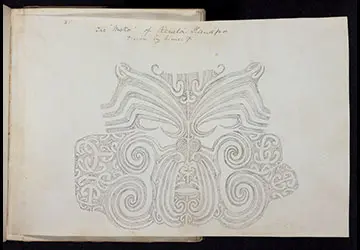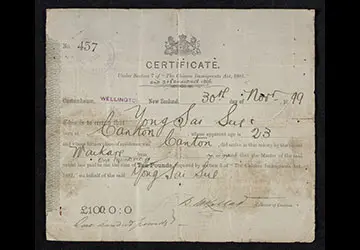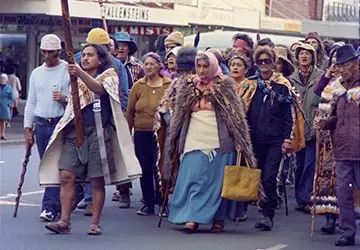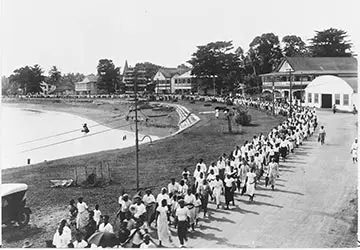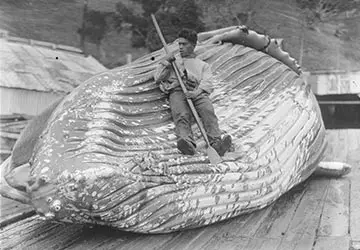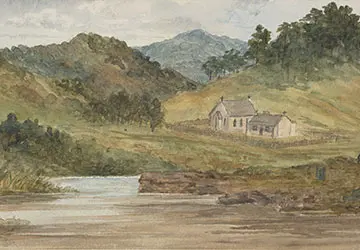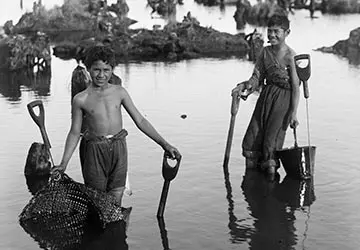Te Kupenga — stories to learn about Aotearoa NZ histories
Find out how Te Kupenga online can help ākonga (students) learn about New Zealand's histories. Discover a range of stories about items from the Turnbull Library with curated resources which link to key contexts of Aotearoa NZ's histories curriculum.
Alexander Turnbull Library — a gift that continues to grow
The library began as a legacy of Alexander Horsburgh Turnbull — a collector and bibliophile. He once said:
Anything whatever to do with this colony, on its history, flora, fauna, geology and inhabitants, will be fish for my net, from as early a date as possible until now.
The Turnbull collections have continued to grow in range and format through legal deposit, targeted purchasing, and the bequests and donations of thousands of New Zealanders who have followed in Turnbull’s footsteps.
What is Te Kupenga?
Te Kupenga (the net) is short for Te Kupenga: 101 Stories of Aotearoa from the Turnbull. This book was produced as part of the centennial celebration of the magnificent collections of the Alexander Turnbull Library and of the kaimahi (staff) who work with them.
Thirty-eight kaimahi (and one guest author) have used their own unique and diverse voices and interpretations to create mini-essays (stories) based on items they selected from the Turnbull collections. Some are in te reo Pākehā and some in te reo Māori. The selected items include photographs, manuscripts, maps, music, oral histories, digital media, drawings, paintings and books.
National Library Services to Schools has taken stories from the book, added curated resources and created Te Kupenga: Stories of Aotearoa New Zealand (Te Kupenga online) to ‘inspire student learning and understanding about Aotearoa New Zealand's histories and society from 1800s to 2020s’.
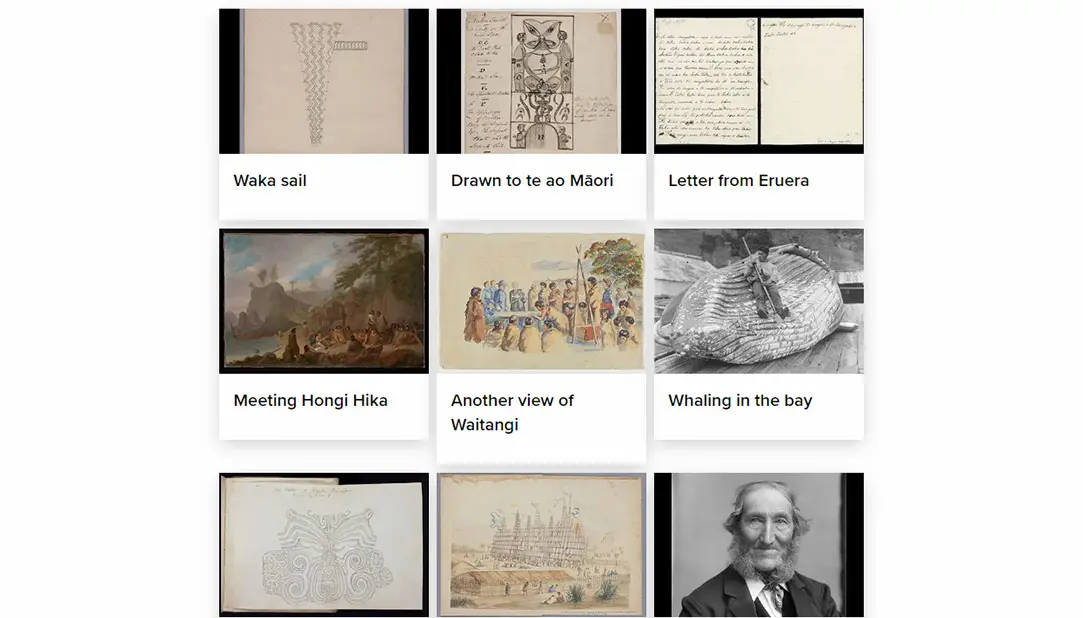
Te Kupenga online — gallery of collection items and stories.
Stories to help ākonga learn about our histories
Te Kupenga stories can help ākonga discover the histories of the places, communities and country in which they live.
Each story is supported by links to other relevant items in the Alexander Turnbull Library collections and curations of resources from Topic Explorer and Many Answers.
The stories and curated resources in Te Kupenga: Stories of Aotearoa New Zealand link to the key contexts of Aotearoa New Zealand's histories in the curriculum. This blog post gives some examples.
Whakapapa me te whanaungatanga | Culture and identity
This context focuses on how the past shapes who we are today — our familial links and bonds, our networks and connections, our sense of obligation, and the stories woven into our collective and diverse identities.
Moko of Kawepō — Rēnata Tama-ki-Hikurangi Kawepō was highly respected by both Māori and Pākehā. He was an extraordinary rangatira, missionary and writer in a time of great historical change.
A taxing imposition — explores how Chinese migrants began arriving in Aotearoa during the 1860s, many finding work in the goldfields. Racial prejudices soon saw restrictions, such as a poll tax, placed on these immigrants.
Tino rangatiratanga me te kāwanatanga | Government and organisation
This context focuses on the history of authority and control, and the contests over them. At the heart of these contests are the authorities guaranteed by Te Tiriti o Waitangi | The Treaty of Waitangi.
Toitū te whenua — i kōkiri te hīkoi mō te whenua i te tau 1975 nā te hēmanawatanga o te iwi Māori ki ngā rirohanga whenua. I tīmata tēnei hīkoi i Te Tai Tokerau, a, i mutu ki Te Whare Paremata, Te Whanganui-ā-Tara.
‘Not one more acre' — the 1975 Māori Land March saw protestors march from Northland to Parliament grounds in Wellington. Led by Dame Whina Cooper, the hīkoi was a protest against the loss of whenua Māori.
This context also considers the history of the relationships between government agencies and the people who lived here and in the Pacific.
Sāmoa mō Sāmoa! — New Zealand’s rule of Sāmoa in the early 20th century created tensions and conflict. This intensified Sāmoa’s strive for independence, which was achieved in 1962.
Tūrangawaewae me te kaitiakitanga | Place and environment
This context focuses on the relationships of individuals, groups, and communities with the land, water, and resources, and on the history of contests over their control, use, and protection.
Whaling in the bay — commercial whaling is now abhorrent to many New Zealanders. Read about whaling at Whangamumu from 1844 to 1941, and the interactions between Māori and Pākehā that occurred through this once thriving industry.
Custom meets colonisation — for Māori, harvesting and preserving manu (birds) like tītī (muttonbird) is a centuries-old customary practice involving kaitiakitanga and tikanga. But colonisation affected this practice.
Kōwhiringa ohaoha me te whai oranga | Economic activity
This context focuses on the choices people made to meet their needs and wants, how they made a living individually and collectively, and the resulting exchanges and interconnections.
Selling a farming dream — the European settlement at Pūhoi was established by immigrants from Bohemia in the 1800s. Read about how these settlers were helped by Ngāti Rongo and worked hard to establish their farms.
Digging for livelihoods — most of Aotearoa New Zealand’s gumdigging took place in the swamps of Te Tai Tokerau, Northland. It was hard work for the mainly Māori or Dalmatian gumdiggers.
Use Te Kupenga in the classroom
History isn’t about memorising facts, figures and dates. Rather, it's about drawing on evidence to uncover a narrative to tell a story, to find truths.
Te Kupenga online highlights both a wide range of primary sources through which history can be explored and provides a personalised response to these sources.
The stories with their supporting resources can be used to develop the abilities of ākonga to interpret the items, evoke questions for deeper inquiry and think critically about the past. They may even be inspired to cast their net widely and fill it with bountiful knowledge.
